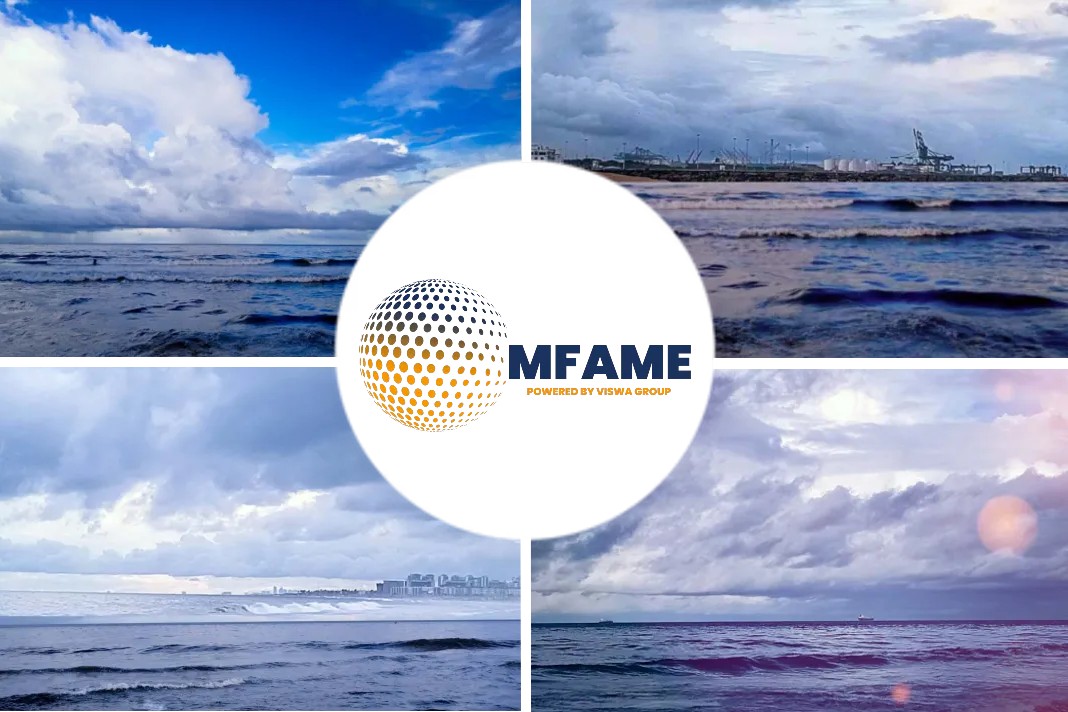The UK MAIB issued a double investigation report focusing on the unintentional release of carbon dioxide (CO2) from the fixed fire-extinguishing system onboard two ships, in two separate incidents, says an article published in Safety4Sea.
There was no injury in these cases, however, MAIB notes, this type of incident has caused 72 deaths and 145 injuries, mainly in the marine industry, between 1975 and 2000.
So, today we are dwelling on that report to analyse what went wrong and how can we prepare ourselves for such incidents.
The Incident
On 8 June 2016, the roll on, roll off (ro-ro) vessel Eddystone experienced an unintentional release of carbon dioxide (CO2) from its fixed fire-extinguishing system while in the Red Sea. A similar incident took place on 17 July 2017 on board the ro-ro passenger ferry Red Eagle while on passage from the Isle of Wight to Southampton. In both cases, gas leaked into the CO2 cylinder compartment, but was prevented from entering the engine room by the main distribution valve which remained closed.
Findings
- It is almost certain that the CO2 fire-extinguishing system on Eddystone discharged because of one or more incorrectly torqued Schmöle cylinder valve set screws.
- The unintended release of CO2 on Red Eagle was caused by one or more cylinder valves leaking into the manifold, causing the system to discharge.
- Red Eagle’s fixed fire-extinguishing system was designed such that pressurisation of the manifold would lead to the release of all the remaining cylinders.
- It is likely that the torque on Eddystone’s Schmöle valve set screws had not been checked during the system’s last inspection 8 months earlier.
- Red Eagle’s cylinder valves showed evidence of refurbishment by service suppliers, which led to the entrapment of brass particles on the sealing surface of one valve, causing it to leak.
- Regular inspection and maintenance of CO2 cylinder valves in line with the manufacturer’s instructions is of paramount importance in ensuring the safety of these systems.
- The practice of using ships’ service air to blow through CO2 systems is likely to have contributed to the premature failure of fittings on these systems.
- The purpose and function of leakage alarm switches was not understood by the service suppliers or surveyors involved, resulting in them being incorrectly set and subjected to inappropriate tests.
- Given the hazard that CO2 poses to human health, there is a need for the IMO to clarify MSC.1/Circ.1318 section 6 to remove any ambiguity about the requirements for hydrostatic testing of high pressure cylinders.
- It can be concluded that ambiguity exists over the appropriate servicing standards to be applied to cylinder valves, and that the generic guidance available to the industry varies in quality.
- Flag administrations, classification societies, ship’s owners, operators and crew all rely on approved service suppliers to ensure that CO2 fixed fire-extinguishing systems are in a continuous state of readiness, by means of regular maintenance and testing.
- The level of service given by approved service suppliers regularly fails to maintain the safety of CO2 based fixed fire-extinguishing systems on board ships.
Lessons learned
- the maintenance of the fire-extinguishing systems was inadequate
- the available guidance for the marine industry on the maintenance and inspection of CO2 fixed fire-extinguishing systems was insufficient
Recommendations
Recommendations have been made to:
The Maritime and Coastguard Agency (2018/123 and 2018/124) to ensure that all safety devices fitted to CO2 fixed fire-extinguishing systems are maintained and surveyed appropriately; and, to seek clarification from the International Maritime Organization of the maximum permitted periodicity between hydrostatic testing of individual high pressure cylinders (MSC.1/Circ.1318)
Det Norske Veritas – Germanischer Lloyd and Lloyd’s Register (2018/125), to raise with the International Association of Classification Societies the issue of the quality of service provided by approved service suppliers in the maintenance of CO2 fixed fire-extinguishing systems
The owners of Red Eagle (2018/126), to review the design of the CO2 fire-extinguishing systems fitted to their vessels where the leakage of a single cylinder valve causes the entire system to discharge
Did you subscribe to our daily newsletter?
It’s Free! Click here to Subscribe!
Source: Safety4Sea


















